Bright Racing Shox (BRS) is back with another take on an inverted fork. The Italian suspension brand is now introducing its third generation of the dedicated enduro fork NEXT, called the NEXT-3RC (RC stands for “Regularity Competition”). Like their previous upside-down (USD) suspension forks, BRS claims that their designs have solved the problems that have plagued other USD forks including issues with torsion, smooth suspension travel, and lateral flexion.
“When I started thinking about the Bright Racing Shocks project in 2009, there was widespread skepticism around my proposal to create a USD suspension from scratch. Today we can proudly say that ourF929 fork, in both NEXT, XCO and Skunk versions, was the first USD fork to overcome the typical structural and functional problems of this type of fork in the MTB world, an achievement that has made history.
Our ongoing efforts now focus on optimizing the hydraulic systems of our forks, with the continued development of our ACAD cartridge, now in its eighteenth version. In addition to the mechanical structure, we believe that what a rider really needs is a system that adapts to his or her riding style on a continuous basis.
Here at Bright, this is what we work on relentlessly. We believe that offering every user, whether pro or amateur, a customized and upgradeable setup is the key to success for a high-performance suspension manufacturer. Our motto ‘competition prototype, sold to the public’ perfectly reflects our philosophy.”
– BRS Founder Pablo Fiorilli.
![[NEXT-3RC] sliding Bushing (compr) Large](https://bikerumor.com/wp-content/uploads/2024/02/NEXT-3RC-sliding-Bushing-compr-Large-800x960.jpeg)
![[NEXT-3RC] sliding Bushing (exte) Large](https://bikerumor.com/wp-content/uploads/2024/02/NEXT-3RC-sliding-Bushing-exte-Large-800x960.jpeg)
The NEXT-3RC continues with their sliding bushing design which has been in use since the 90s. Notable changes to the NEXT-3RS include a move from 49mm outer legs to 48mm, a new crown that actually connects the air chambers of both legs, plus many smaller improvements to make the fork better than ever. There’s a lot going on here, so we’ll leave it to BRS to break it down below:
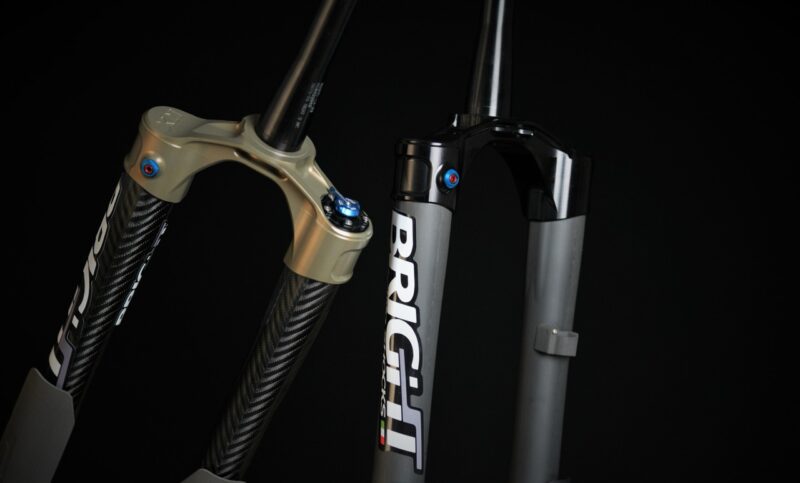
![[NEXT-3RC] Outers structural shape Large](https://bikerumor.com/wp-content/uploads/2024/02/NEXT-3RC-Outers-structural-shape-Large-800x676.jpeg)
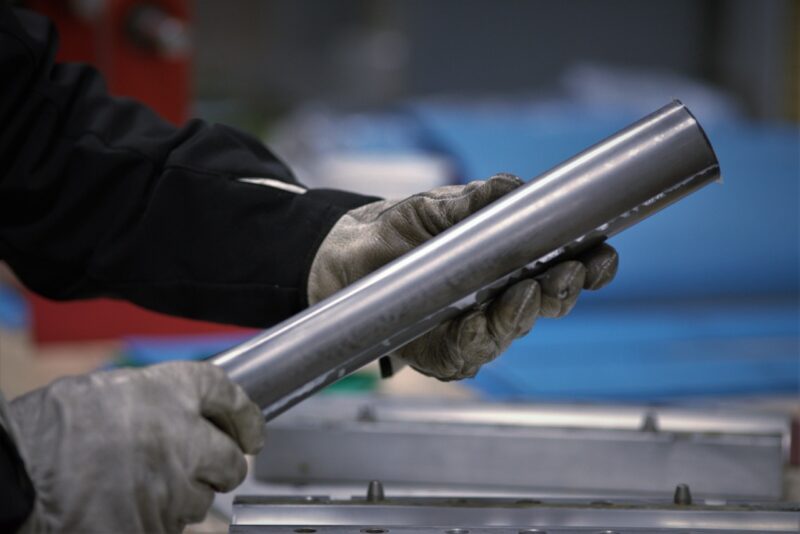
OUTER LEGS:
In the previous version, the outer legs were 49 mm in diameter with a shape designed for high stiffness. The outer legs of the NEXT-3RC undergo changes with a new mold and design, reducing the diameter to 48 mm but introducing reinforcing ribs on the sides to increase stiffness in an oriented manner, following lateral stress flows. In conclusion, mechanical performance has been further increased while decreasing the weight of the component.
![[NEXT-3RC] Air flow thorough the crown Large](https://bikerumor.com/wp-content/uploads/2024/02/NEXT-3RC-Air-flow-thorough-the-crown-Large-800x1200.jpeg)
CROWN:
The fork crown, which retains its complex workmanship as a billet-milled piece of 7075-t751 aircraft aluminum, is reshaped with an innovative design, fine-tuned using dedicated software to identify active masses. This analysis makes it possible to create a design of greater dynamic stability. The new crown also has an air chamber function, connecting the two outer legs through a labyrinth of chambers to increase the volume of air flowing through the steerer tube, which also becomes part of the system. The idea of connecting the two outer legs comes from the mind of EVERFLOW of Italy, which implemented this design two years ago by applying external ducts on traditional forks. Bright brought the concept back to USD architecture by integrating the air passages inside the structural part.
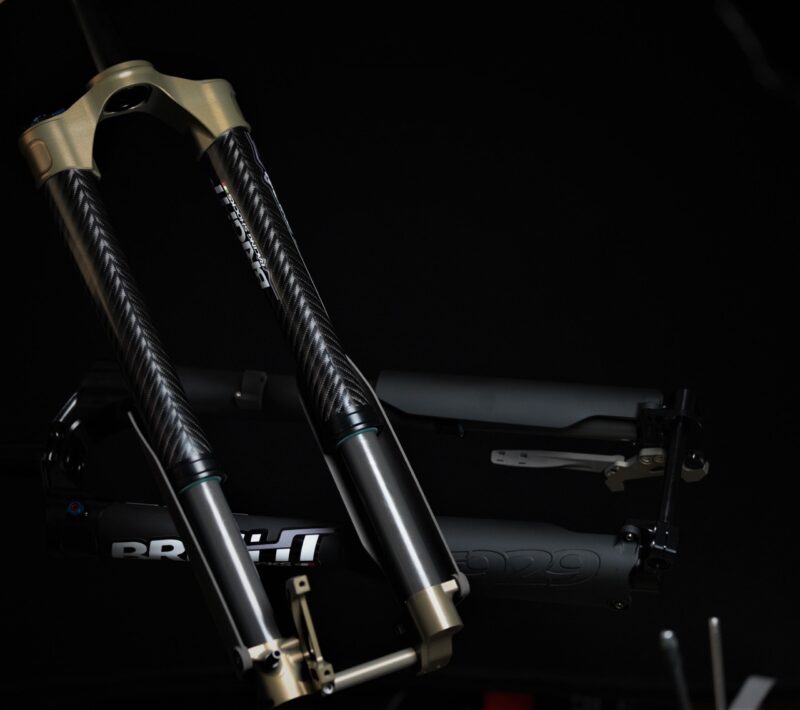
STANCHIONS:
The stanchions extend further into the outer legs to handle greater travel while simultaneously increasing stiffness. Refined to achieve extraordinary roundness and straightness, they are lapped almost entirely by hand with special abrasive stones to achieve a high level of finish. The high-thickness oxidation process, with great microporosity, ensures smooth stanchions even under high stresses.
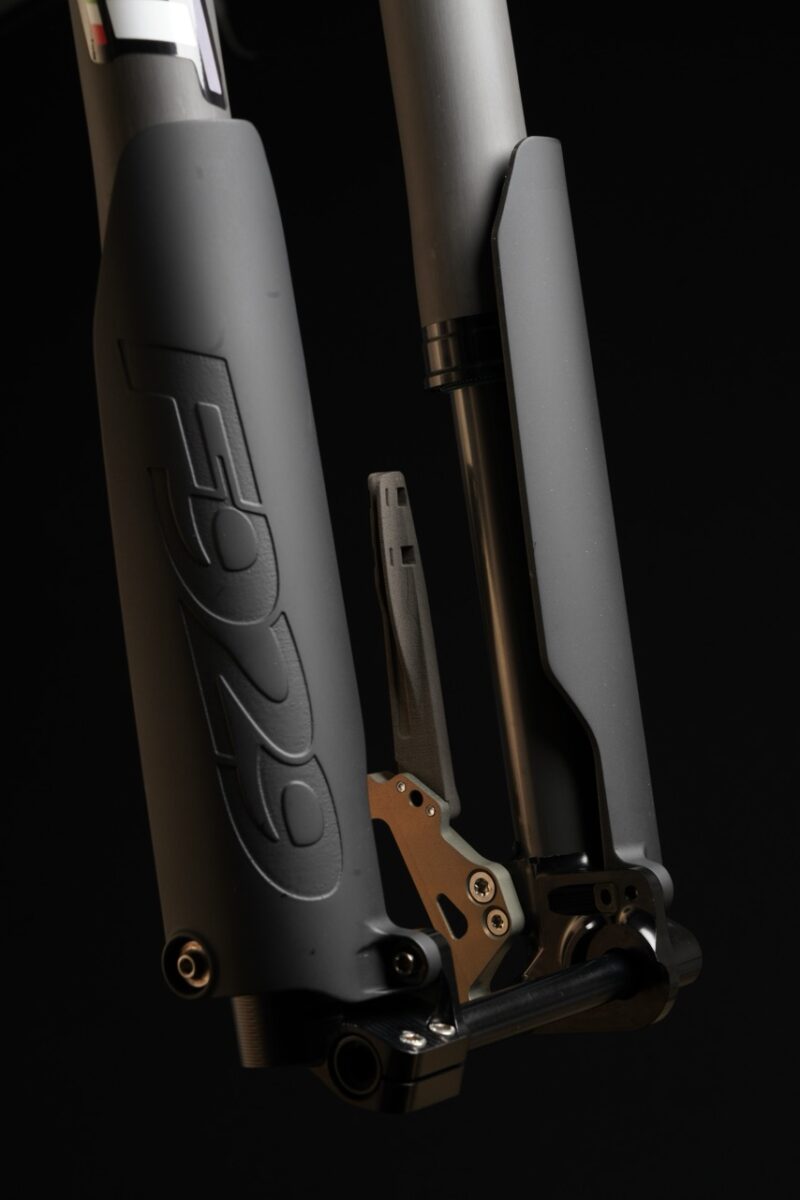
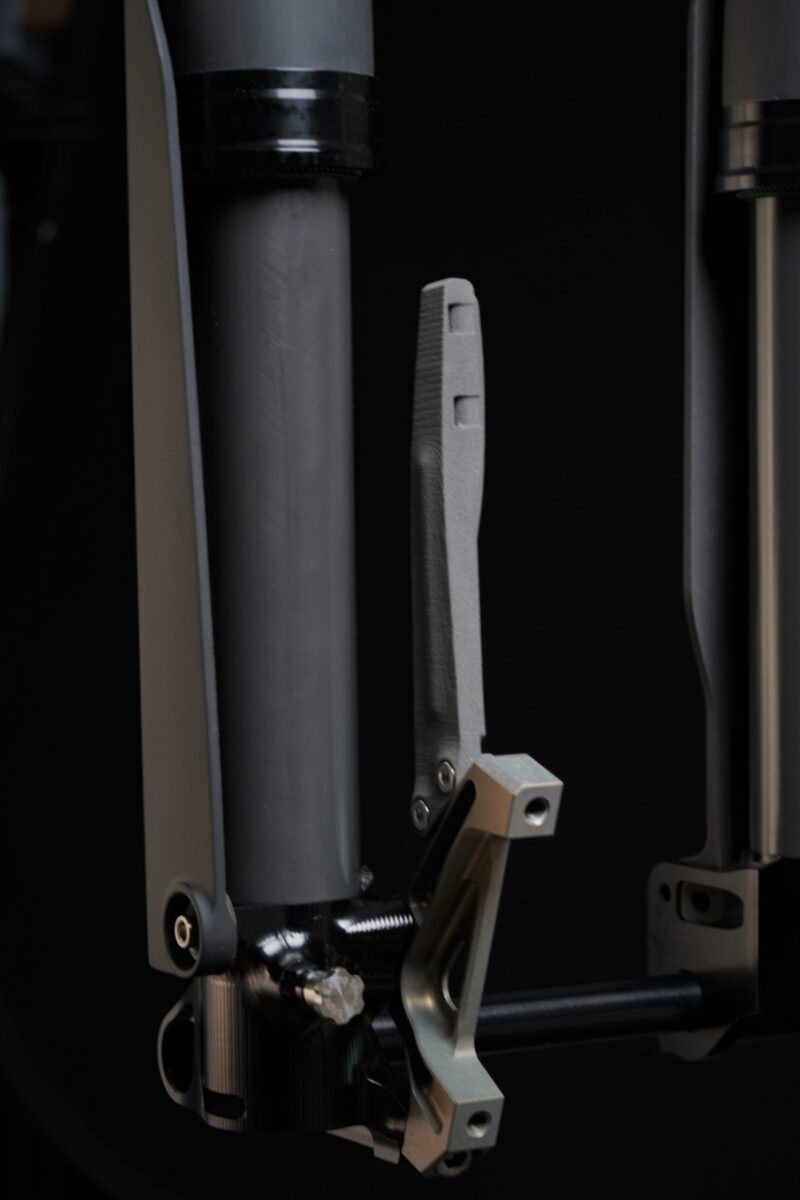
FEET AND STANCHION GUARDS:
A second version of feet with front reinforcing ribs that connect the new stanchion guards is introduced. In this evolution, the guards are attached from the bottom, following a style more oriented toward the Motocross world, and are made by SLS (Selective Laser Sintering) 3D printing to achieve an elastic but strong material. The fork will be available with or without stanchion guards, and in the former case, in two versions: DCMS with the classic BRS top mount and the new MX version with the stanchion guards mounted on the leg.
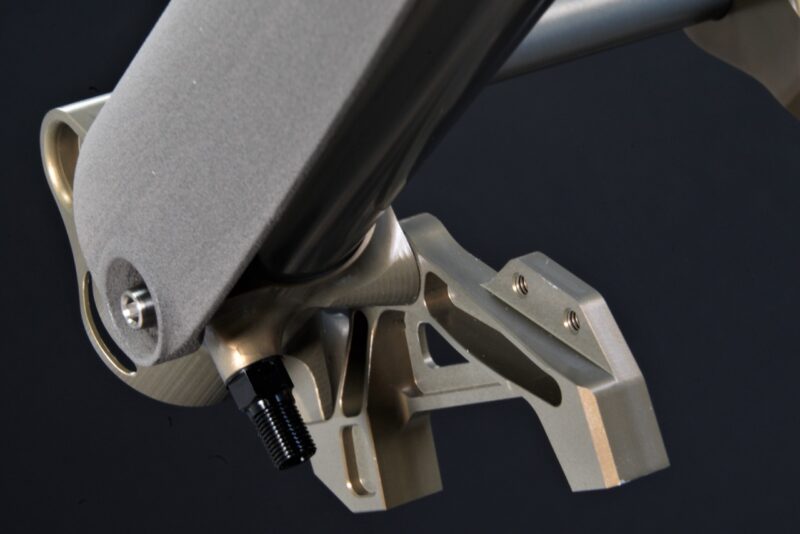
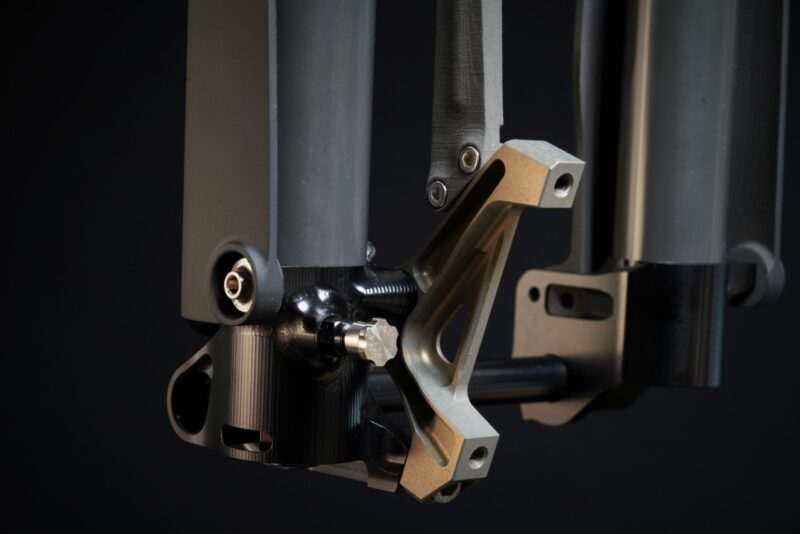
CALIPER BRACKET:
The brake caliper bracket undergoes a total modification, yet remains backward compatible with the forks of previous years. Reinforced and equipped with an additional dedicated brake line bracket, it offers rigid support toward the top of the outer leg. This optional, removable accessory weighs just about 30 grams. The new design also aims for greater stability which induces increased braking power.
BUSHING SYSTEM:
BRS’s sliding bushing system is lengthened by bringing a further increase in torsional stiffness and allowing it to handle greater travel. An even harder material was adopted for the raceways inside the outer legs to achieve an additional level of smoothness, still improving one of the strengths of the Bright forks.
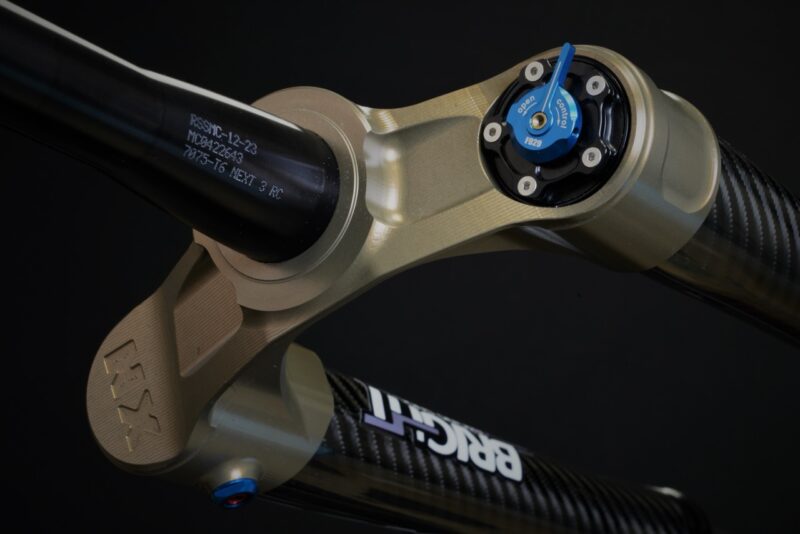
ACAD HYDRAULIC CARTRIDGE:
The hydraulic cartridge is the new ACAD #8. In this version, initial sensitivity and elasticity increase with further notable gains in stability at high impacts due to a longer spring. According to telemetry tests, the ability of version #8 to copy the terrain profile, compared to version #7, has increased by approximately 20%. The rebound end-stop is redesigned, with a hydraulic valve managing its limits.
TRAVEL E TUNING:
Maximum travel increases to 195 mm, of which 15 mm is left for the extra travel of the negative phase. While in the tuning part, a “COMFORT” set-up with a dedicated cartridge is added to the classic Bright set-up named “RACING” with ASC (ASC Active Sag Control), for riding sensations more similar to commercial forks. This new proposal offers less racingresponse and more initial smoothness, for those who enjoy a more traditional riding style.
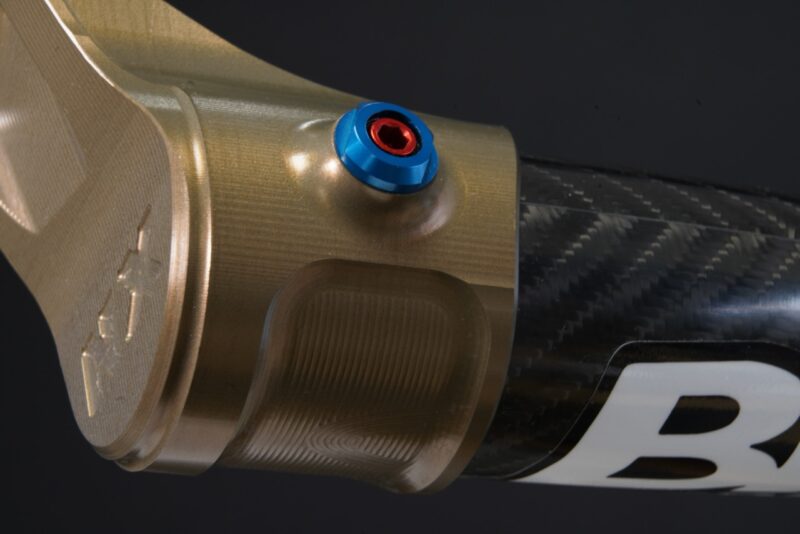
POSITIVE AIR CHAMBER:
BRS’s typical progression curve is the result of a hollow chamber, which on NEXT-3RC remains so, but this is now complemented by the ability to manage initial feel and mid-stroke support via a compensating valve located at the front of the crown and fully manageable by the user. This valve is connected to both outer legs via the new crown design described above.
Pricing & Availability
The F929 NEXT-3RC isn’t a fork you’re going to buy off the shelf, so to purchase one you’ll have to get in touch with Bright Racing Shocks directly. BRS hasn’t released a price for the NEXT-3RC version yet, but the previous NEXT fork started at 1,880 Euro for the standard version or 2,030 Euro for the version with DCMS shaft guards.
